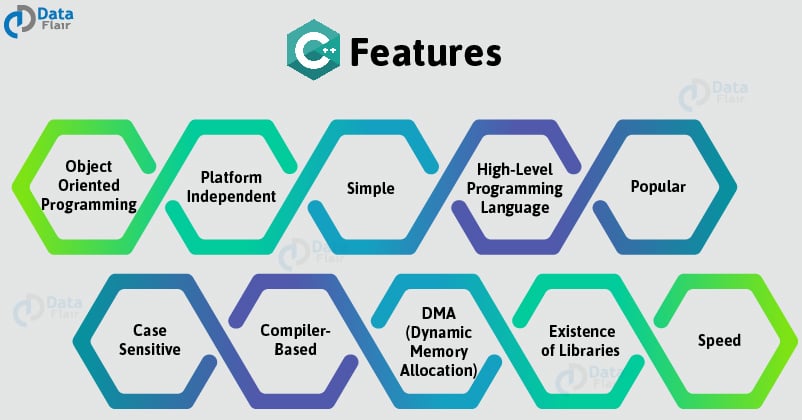Arrays In C Programming Ppt
- C Programming Tutorial
- C Programming useful Resources
Programming Example: Algorithm Design. Open the input and output files. If the input file does not exist, exit the program. Read the length of the secret code. If the length of the secret code is greater than 250, terminate the program because the maximum length of the code in this program is 250. Read and store the secret code into an array C Programming: From Problem. Arrays Structures of related data items Static entity (same size throughout program) Array is a consecutive group of memory locations same name and the same type (int, char, etc.) To refer to a particular element in an array, we specify the name of the array and the.
- Selected Reading
C programming language allows multidimensional arrays. Here is the general form of a multidimensional array declaration −
For example, the following declaration creates a three dimensional integer array −

Two-dimensional Arrays
The simplest form of multidimensional array is the two-dimensional array. A two-dimensional array is, in essence, a list of one-dimensional arrays. To declare a two-dimensional integer array of size [x][y], you would write something as follows −
Where type can be any valid C data type and arrayName will be a valid C identifier. A two-dimensional array can be considered as a table which will have x number of rows and y number of columns. A two-dimensional array a, which contains three rows and four columns can be shown as follows −
Thus, every element in the array a is identified by an element name of the form a[ i ][ j ], where 'a' is the name of the array, and 'i' and 'j' are the subscripts that uniquely identify each element in 'a'.
Initializing Two-Dimensional Arrays
Multidimensional arrays may be initialized by specifying bracketed values for each row. Following is an array with 3 rows and each row has 4 columns.
The nested braces, which indicate the intended row, are optional. The following initialization is equivalent to the previous example −
Accessing Two-Dimensional Array Elements

An element in a two-dimensional array is accessed by using the subscripts, i.e., row index and column index of the array. For example −
The above statement will take the 4th element from the 3rd row of the array. You can verify it in the above figure. Let us check the following program where we have used a nested loop to handle a two-dimensional array −
When the above code is compiled and executed, it produces the following result −
As explained above, you can have arrays with any number of dimensions, although it is likely that most of the arrays you create will be of one or two dimensions.
- C Programming Tutorial
- C Programming useful Resources
- Selected Reading
Arrays a kind of data structure that can store a fixed-size sequential collection of elements of the same type. An array is used to store a collection of data, but it is often more useful to think of an array as a collection of variables of the same type.
Instead of declaring individual variables, such as number0, number1, ..., and number99, you declare one array variable such as numbers and use numbers[0], numbers[1], and ..., numbers[99] to represent individual variables. A specific element in an array is accessed by an index.
All arrays consist of contiguous memory locations. The lowest address corresponds to the first element and the highest address to the last element.
Pointers In C Programming
Declaring Arrays
To declare an array in C, a programmer specifies the type of the elements and the number of elements required by an array as follows −
This is called a single-dimensional array. The arraySize must be an integer constant greater than zero and type can be any valid C data type. For example, to declare a 10-element array called balance of type double, use this statement −
Here balance is a variable array which is sufficient to hold up to 10 double numbers.
Initializing Arrays
You can initialize an array in C either one by one or using a single statement as follows −
The number of values between braces { } cannot be larger than the number of elements that we declare for the array between square brackets [ ].
If you omit the size of the array, an array just big enough to hold the initialization is created. Therefore, if you write −
You will create exactly the same array as you did in the previous example. Following is an example to assign a single element of the array −
The above statement assigns the 5th element in the array with a value of 50.0. All arrays have 0 as the index of their first element which is also called the base index and the last index of an array will be total size of the array minus 1. Shown below is the pictorial representation of the array we discussed above −
Accessing Array Elements
An element is accessed by indexing the array name. This is done by placing the index of the element within square brackets after the name of the array. For example −

The above statement will take the 10th element from the array and assign the value to salary variable. The following example Shows how to use all the three above mentioned concepts viz. declaration, assignment, and accessing arrays −
When the above code is compiled and executed, it produces the following result −
Arrays in Detail
Array In C Programming Language
Arrays are important to C and should need a lot more attention. The following important concepts related to array should be clear to a C programmer −
| Sr.No. | Concept & Description |
|---|---|
| 1 | Multi-dimensional arrays C supports multidimensional arrays. The simplest form of the multidimensional array is the two-dimensional array. |
| 2 | Passing arrays to functions You can pass to the function a pointer to an array by specifying the array's name without an index. |
| 3 | Return array from a function C allows a function to return an array. |
| 4 | Pointer to an array You can generate a pointer to the first element of an array by simply specifying the array name, without any index. |

